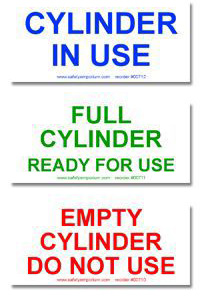



Find all of your laboratory and workplace safety supplies at Safety Emporium!
 AIHA |
 Glossary Index |
 ALARA |
| MSDS Topics |
Free Sites | FAQ's | Regulations | Glossary | Software | Suppliers |
| Books | Forum | Poll | Fun stuff | Quiz | Store | |
| Understand your MSDS with the MS-Demystifier | Search ALL our MSDS info | |||||

Be compliant with confined space products from Safety Emporium.
Air is the mixture of gases that surrounds the Earth. The composition of the earth's atmosphere varies with altitude, but at sea level contains approximately 78% nitrogen and 21% oxygen by volume.
An oxygen-deficient atmosphere contains less than 19.5% oxygen by volume.
An oxygen-enriched atmosphere contains more than 23.5% oxygen by volume.
An atmosphere that is immediately dangerous to life or health (IDLH) poses an immediate threat to life, would cause, irreversible adverse health effects, or would impair an individual's ability to escape from a dangerous atmosphere.
The amount of water vapor in air tends to vary depending on the temperature and atmospheric pressure. Dry air at standard atmospheric pressure has the following composition:
| Gas | Chemical Formula | Percent by Volume |
| Nitrogen | N2 | 78.03 |
| Oxygen | O2 | 20.99 |
| Argon | Ar | 0.94 |
| Carbon Dioxide | CO2 | 0.033 |
| Neon | Ne | 0.0015 |
| Helium | He | 0.000524 |
| Krypton | Kr | 0.00014 |
| Xenon | Xe | 0.000006 |
Standard atmospheric pressure is defined as one atmosphere = 14.7 pounds per square inch (psi) = 760 torr. A list of pressure units and an on-line conversion calculator is available on this site.
Cylinders of compressed air are often used in industrial settings and laboratories. Be certain you are familiar with cylinder and compressed gas safety, including the proper use of gas regulators.
Oxygen-enriched atmospheres present exceptionally dangerous fire hazards (see link below). Oxygen-deficient atmospheres may result in unconsciousness, coma or death (see link below).

Safety Emporium has a great lineup of gas cylinder signs, storage racks, clamps and more.
Air can appear in many contexts on a Safety Data Sheet:
In addition, many chemicals have high vapor pressures, which can result in an oxygen-deficient atmosphere, a flammable atmosphere, or narcosis. Never store cylinders of air or oxygen with flammable materials or gases.
See also: Asphyxiant, pressure units, ventilation.
Additional definitions from Google and OneLook.
Entry last updated: Saturday, February 19, 2022. This page is copyright 2000-2025 by ILPI. Unauthorized duplication or posting on other web sites is expressly prohibited. Send suggestions, comments, and new entry desires (include the URL if applicable) to us by email.
Disclaimer: The information contained herein is believed to be true and accurate, however ILPI makes no guarantees concerning the veracity of any statement. Use of any information on this page is at the reader's own risk. ILPI strongly encourages the reader to consult the appropriate local, state and federal agencies concerning the matters discussed herein.